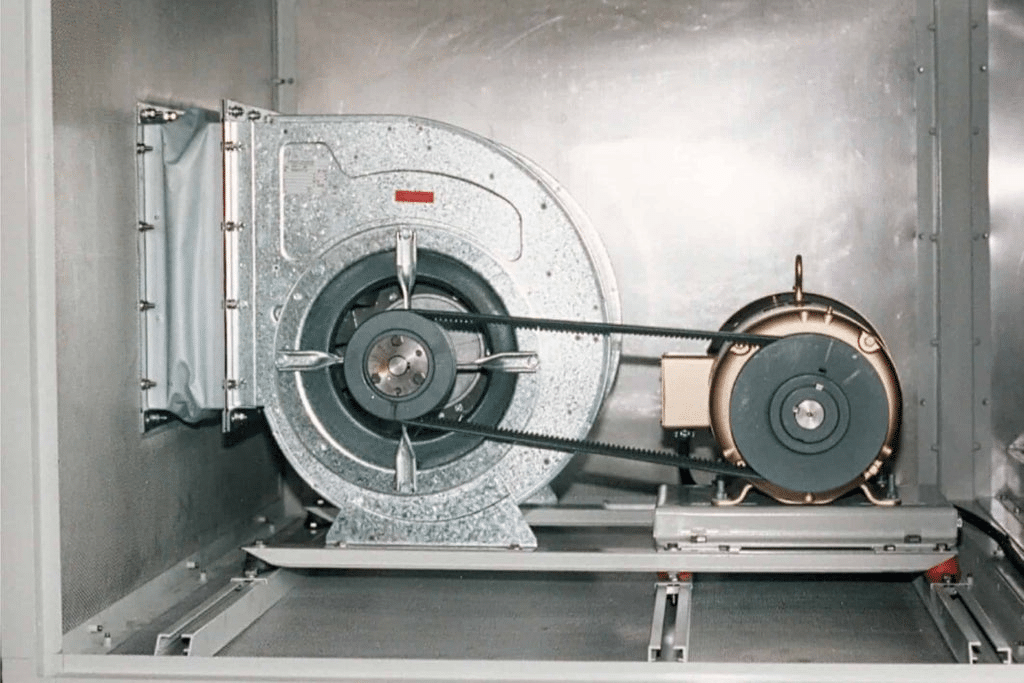The blower fan is one of the most important yet often overlooked parts of the heating, ventilation, and air conditioning system, which is the foundation of indoor comfort. All of a building’s rooms receive a steady supply of conditioned air thanks to this piece of equipment, which hums in the background. Even the most advanced furnace or air conditioner wouldn’t be able to distribute air without it.
Homeowners and property managers can maintain comfort and efficiency throughout the year by understanding its purpose and the repercussions of a malfunction. The blower fan is essential to the smooth operation of the HVAC system because it not only drives air into the system but also promotes balanced temperatures, energy efficiency, and system lifespan.
Why Blower Fans Matter in Air Circulation
Blower fans are the force behind the movement of air in an HVAC system. After air has been cooled or heated by the core elements of the system, it is the blower fan that pushes it through ductwork and into living areas.
The fan guarantees even distribution of temperature, minimizing the likelihood of hot or cold spots and maintaining rooms at comfortable levels regardless of size or configuration. A healthy, working fan also ensures healthy air quality by circulating air over filters, capturing dust, pollen, and other impurities.
When the fan is not working, airflow diminishes, causing inadequate circulation, plugged filters, and added pressure on the entire system. This demonstrates the importance of the fan’s consistent performance in maintaining efficiency and comfort in both residential and commercial settings.
Signs of Blower Fan Strain
Blower fans wear out like any other mechanical part. The first indications of a problem are typically strange sounds like screeching, grinding, or rattling, which usually point to loose belts, deteriorating bearings, or foreign objects lodged in the blades.
Thin air coming from vents or fluctuating airflow throughout the house may be signs that the blower is struggling to keep up with the demand. Professional service may be required when the fan unit is defective; however, these issues are often related to maintenance problems, such as dirty filters or clogged ducts.
The importance of timely attention is confirmed by the fact that homeowners who begin maintenance under Phoenix HVAC services often discover that a blower fan malfunction is the cause of rising utility bills and uneven room temperatures.
Energy Efficiency and Blower Performance
One of the less apparent functions of the blower fan is its impact on energy consumption. A properly running fan makes sure that the conditioned air circulates rapidly and evenly, decreasing the burden on the furnace or air conditioner.
However, when the fan motor loses power or the blades become clogged, the system compensates by running longer cycles, consuming more energy, and increasing expenses. A slow fan can convert an otherwise energy-efficient HVAC system into a power-guzzling hamper.
Such inefficiency is further accelerated in extreme weather, when the system already has to struggle harder to provide comfort. The blower fan is therefore not only about airflow—it is also connected to how effectively a building uses energy, which makes it one of the most important aspects of controlling long-term utility bills.
Comfort Levels During Blower Failure
The living area’s coziness is immediately destroyed if a blower fan fails. Some areas of the house get extremely hot in the summer or extremely cold in the winter when the air stops moving. Disturbances are even caused by some malfunctions, where the fan runs erratically or at half speed.
The residents may feel uneven humidity levels, drafts, or heavy, uncomfortable stale air. Air becomes trapped in certain places without the fan’s circulation, and thermostats won’t accurately display the indoor temperature.
This discrepancy between the thermostat’s stated and actual comfort levels highlights how crucial the blower fan is as the link between system functionality and the home environment. In other words, climate control becomes risky without a reliable blower.
Indoor Air Quality Concerns

Blower fans are also in charge of maintaining the cleanliness of the air indoors. Air passes over filters designed to capture dust, pollen, and other contaminants as it moves through the HVAC system. Before the air enters the living space, contaminants are eliminated by the blower’s steady flow through these filters.
Filtration is lost, and allergens and debris continue to circulate in the absence of a working blower or regular operation. Families with pets, smokers, or people with asthma should be especially concerned about this.
Additionally, a malfunctioning blower may cause moisture to build up in ducts, which may encourage the growth of mold. The blower fan does much more than circulate air; it also maintains air purification, which protects health. This is demonstrated by the quick transformation of indoor spaces from comfortable and healthy to unhealthy.
Mechanical Causes of Breakdown
Blower fans can break down for a variety of reasons, many of which are connected to their constant operation. Dust accumulation can cause imbalances in the fan’s rotation, belts can fray, and motor bearings can deteriorate over time. Electrical problems, such as malfunctioning capacitors or electrical wiring issues, frequently disrupt motor function.
Sometimes, malfunctioning thermostats cause fans to run constantly, leading to overheating and premature wear and tear. Although the goal of preventive maintenance is to identify these issues early, minor malfunctions can develop into major ones if they are not addressed.
The system’s ability to move air is compromised by a seized engine or a broken belt, thereby eliminating heating or cooling capabilities. Understanding these mechanical flaws emphasizes the importance of taking preventive maintenance.
The Cost of Neglecting Fan Issues.
There are severe consequences if you put off fixing a broken blower fan. A slight drop in airflow or an odd noise can quickly escalate into a total shutdown, depriving homes of heating or cooling during critical times of the year. Beyond comfort, there are financial consequences to consider.
A broken blower forces the HVAC system to work harder, which raises utility bills and may cause damage to other parts like heat exchangers or compressors. The final repair or replacement will be more expensive the longer the issue is left unresolved. Additionally, there is an increased level of risk because running an HVAC system with a malfunctioning fan often voids the manufacturer’s warranty. Early blower fan repair saves money and prevents stress on the entire system.
Preventive Measures and Maintenance
Effective routine maintenance procedures are crucial for preventing blower fan failure. Filter replacement, belt and bearing inspections, and clear ducting are all factors that contribute to extending the fan’s lifespan. Overheating and wear caused by friction can also be prevented through routine inspections of the motor’s electrical components and regular lubrication checks.
To prepare fans and other equipment for increased use, the majority of service providers recommend seasonal maintenance before the summer and winter peak usage seasons. In addition to improving performance, these preventative actions protect the HVAC equipment’s long-term investment. Households and businesses can avoid the startling stress of a breakdown and the ensuing distress by practicing proactive care.
The foundation of HVAC systems, blower fans provide high indoor air quality, conditioned air circulation, and economical energy use. When they malfunction, the system quickly loses its ability to provide comfort, leading to erratic temperatures, higher utility costs, and potential health problems.
Over time, their mechanical parts deteriorate, but with timely care and routine maintenance, their lifespan can be extended by years. Ignoring early warning signs of issues can lead to increased costs and the collapse of the entire system. When building managers and homeowners understand the importance of each part, they can make well-informed maintenance decisions that ensure their HVAC systems continue to provide comfort, dependability, and efficiency for many years to come.

